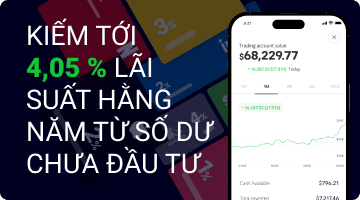-
Giao dịch và đầu tư
Thị trườngNhiều cách đầu tư hơn
Credit and other risks apply, please read the terms & conditions.
-
Tại sao nên chọn eToro
-
Tìm hiểu
-
Company
- Trợ giúp
Blog
Bài viết Nổi bật
Trang chủ / Tin tức và phân tích



